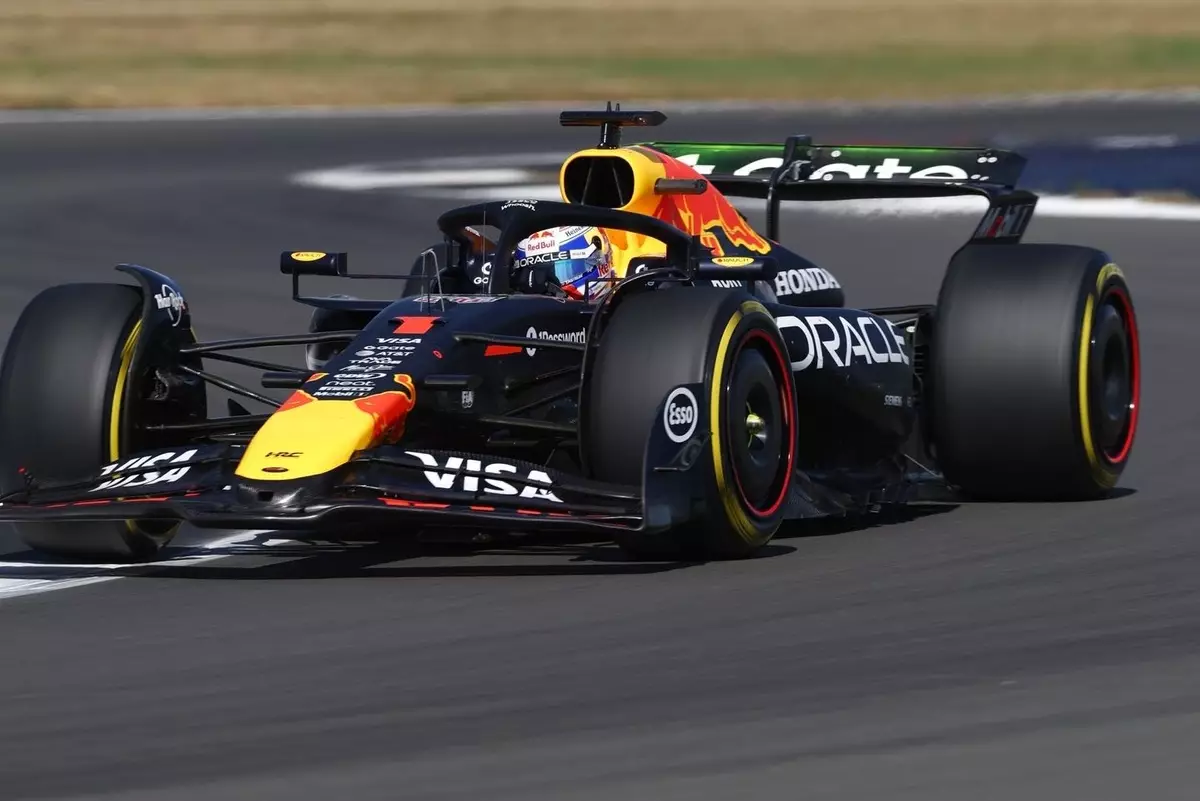The current state of Red Bull Racing exemplifies a paradox common in high-performance motorsports: a team with undeniable talent and resources struggling to convert potential into consistent dominance. Despite Max Verstappen’s extraordinary record—clinching four consecutive world championships—the team’s recent form reveals cracks that threaten their longstanding supremacy. The brutal reality is that even the best drivers and top-tier teams encounter turbulent periods of underperformance, and Red Bull’s latest struggles highlight the fragile nature of success in Formula 1. This scenario underscores the importance of not just raw speed, but also precision engineering, strategic adaptability, and mental resilience when chasing victory.
Verstappen’s candid frustrations during Friday practice at Silverstone reveal an uncomfortable truth: even champions are not immune to technical lapses and environmental challenges. His comments about lacking car balance and sensitivity to wind suggest that Red Bull’s current setup is not fully aligned with the demanding conditions of the British Grand Prix. In high-stakes racing, small aerodynamic discrepancies and chassis instabilities can snowball into significant performance deficits. If Red Bull’s engineers don’t swiftly address these issues, Verstappen risks falling further behind rivals—most notably McLaren, which currently boasts superior pace with Oscar Piastri and Lando Norris.
The fluctuating nature of F1 performance means teams must not merely react but anticipate changes in track conditions, weather, and competitor strategies. Verstappen’s admission that “every weekend is different” recognizes that consistency in performance demands continuous evolution. The question for Red Bull is whether their current upgrades and data-driven developments are enough to close the gap or if deeper, more transformative changes are required.
Strategic Stability Amidst Rumors and Uncertainty
Behind the scenes, a different kind of pressure looms—speculation about Verstappen’s future beyond this season. Media outlets have fueled rumors of a possible switch to Mercedes from 2026, creating a distractions that threaten to destabilize the team’s focus. Christian Horner’s diplomatic stance—claiming confidence yet refusing to provide guarantees—reflects the complex balancing act teams face. In Formula 1, driver contracts are not merely business arrangements; they are integral to team morale and strategic continuity.
Horner’s emphasis on “new tools” and ongoing investments in infrastructure signals a strategic plan to sustain competitiveness. The announced addition of a new wind tunnel and advanced simulation resources suggests that Red Bull recognizes the need for technological edge, especially as aerodynamic challenges like understeer and poor balance become critical bottlenecks. However, acquiring technology alone isn’t enough; integrating it effectively into car development and ensuring that driver feedback translates into actionable upgrades is fundamental.
It’s worth noting that while technical improvements are a core focus, managing internal dynamics and driver confidence is equally vital. Verstappen, as the team’s flagship, needs to feel assured that the technical support and strategy are aligned with his championship ambitions. Red Bull’s ability to maintain stability—despite rumors and internal challenges—may determine whether they can regain the kind of form that once made them seemingly invincible.
Reimagining Red Bull’s Path Forward
To reclaim their position at the pinnacle of Formula 1, Red Bull must adopt a proactive, rather than reactive, approach. The team’s response to Silverstone’s wind-sensitive conditions should go beyond temporary adjustments; it should be about developing a resilient, adaptable car that performs consistently across a spectrum of variables. This entails leveraging their upcoming technological upgrades to fine-tune aerodynamics, improve feedback loops, and enhance stability at low speeds and in challenging wind conditions.
Moreover, fostering a mindset of relentless innovation and internal cohesion is essential. Verstappen’s dissatisfaction, if not addressed, can breed frustration that undermines motivation. Conversely, viewing this period as an opportunity for growth and breakthrough innovation can serve as a catalyst for renewed dominance. The team’s investments in infrastructure, if coupled with a culture of continuous improvement, will position them better for future challenges.
Finally, emotional and strategic intelligence will be pivotal. Managing driver expectations, navigating rumors about contract uncertainty, and maintaining high morale are part of the delicate balance that team leaders must master. Red Bull’s storied history suggests they have the strategic depth and innovation capacity to turn adversity into advantage—but only if they align their technological advancements with a renewed focus on driver comfort and race-day strategy. Striking that balance could determine whether they extend their winning streak or fall prey to the rising tide of competitors eager to seize the crown.


Leave a Reply